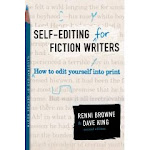A fictional dream occurs when the world in the story you’re reading becomes more real than the physical world around you. We’ve all be there at one time or another—transported into another time or another place by an author’s well crafted words.
This experience is one that we try to create for our readers. And it’s one of the biggest differences between a good book and a great one. So how do we create this dream world? We do it by paying attention. Notice where you are right now. Are there sounds? Smells? Even if you’re not overwhelmed by your setting I bet you’re aware of it. The same thing is true for our characters. If we neglect those details, we deny our readers the chance to be transported.
Even more important than what we do to put our readers to sleep is what we DON’T do. I think writers are far more often guilty of waking a reader up. We, as the author, have an obligation to not jolt our readers out of their dream world. So what are some things we do that interrupt pleasant dreams?
- Bad Grammar—I’m not talking about a missed comma or two. I’m referring to sentence structure that’s difficult to read, modifiers that modify the wrong thing or even complicated punctuation. All of these things can cause a reader to stop and ponder what you’re trying to say. Once they stop you’ve lost them, they’re awake.
- Confusing Dialogue—This can include things like long sections of dialogue with no speaker tags or beats. If the reader has to go back and figure out who’s speaking it means you’ve either not put in enough tags or your characters don’t have unique enough voices to be identified. One word of caution, overuse of ‘said’ instead of interspersing with speaker beats can be just as jarring.
- Creative Speaker Tags—Anytime you use a speaker tag other than said or maybe asked you run the risk of making your reader stop. The word said is so common place in literature that it’s almost invisible. The reader skims lightly over it, uninterrupted. If, on the other hand, you pull out your thesaurus and try to find other words to use in its place you end up with jarring prose that tells the story through speaker tags instead of dialogue.
- Characters who don’t act right—I’m not referring to moral actions. We’ve all read stories where a character does something and we find ourselves shaking our heads. Know your characters well enough to keep them from acting out of character.
- Overwriting a dialect—I’m not against allowing your character to speak with an accent or in a dialect, but be careful how you do it. When the character is first introduced you can use a heavier hand with the spellings that denote dialect, such as learnin’ instead of learning. But after the reader gets to know the character they can hear the character speaking in their head and you don’t have to use spelling to convey their voice. In fact, if the reader has to work too hard to decipher your intent they will never even make it into the fictional dream.
- Head Hopping—This is when you switch POV (point of view) from one character to another without a good reason. The rule of thumb is that each scene should have a single POV character and that should be the character with the most at stake.












Well said! Great post.
ReplyDeleteThank you so much, Edie. Excellent post.
ReplyDeleteSo true. A bit like seeing a car pass by a field in the Shire in Lord of the Rings.
ReplyDeleteGreat post on how to maintain the fictional dream. Good example there, Darlene.
ReplyDeleteThanks to you all - especially to Darlene for your great example!
ReplyDelete